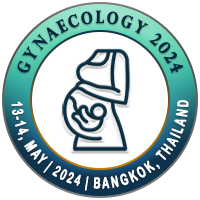
Helmy Mahdystira
University of Muhammadiyah Purwokerto, IndonesiaTitle: A comparison between low dose spinal anesthesia and non-low dose spinal anesthesia to hemodynamics and ephedrine use during cesarean section in Hermina Purwokerto Hospital
Abstract
Hemodynamic disturbances caused by spinal anesthesia in cesarean section (CS) shows a high prevalence. Ephedrine administration and low-dose spinal anesthesia (LDSA) are expected to minimize the effects of hemodynamic disturbances during CS. The study aimed to determine the difference between the administration of ephedrine and hemodynamics in LDSA and NLDSA during SC. This research type is an analytic observational with a cross-sectional design. The sample was obtained from medical records by purposive sampling, namely patients who underwent CS and fitted with ASA I and II. Then statistical tests were performed T-Test and Chi-square.
Results: The study obtained 84 samples of 42 LDSA and 42 NLDSA. Chi-Square test analysis to compare the administration of ephedrine to LDSA and NLDSA obtained a p-value of 0.026. T-Test to compare LDSA and NLDSA on hemodynamic conditions of pulse obtained a p-value of 0.001; systolic blood pressure showed a p-value of 0.001, diastolic blood pressure obtained a p-value of 0.001, and mean arterial pressure had a p-value of 0.001.
Conclusion: There is a significant difference in the administration of ephedrine to LDSA and NLDSA, and there is a significant difference between LDSA and NLDSA in the hemodynamic conditions of pulse, systolic blood pressure, diastolic blood pressure, and mean arterial pressure.
Biography
Helmy Mahdystira has completed his Bachelor of Medicine education at 21 years old at the University of Muhammadiyah Purwokerto, Indonesia. He is currently undergoing medical professional education and has planned to get a medical degree next year. He was interested in gynaecology and obstetrics with the choice of caesarean section delivery modalities as well as consideration of the least risk of complications in childbirth, which is the reason for this study.

